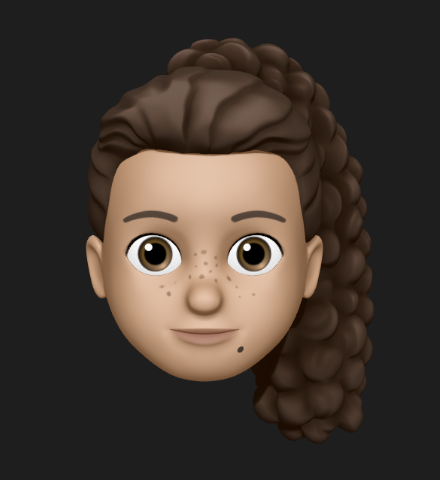 Freelancer tips
Freelancer tips Rank Math: The SEO Plugin Every Freelancer Should Be Using
Rank Math is one of the most complete SEO plugins and the main competitor to Yoast SEO. Discover how to use it, its pros, cons, pricing, and more right here.



How can you maximize your efficiency and creativity as a freelancer? The answer may lie in a simple yet powerful tool: the mind map. But, what is a mind map? In short, it's a visual representation of thought, making it a strong ally in your autonomous career as a vehicle for clarity, efficiency, and innovation.
In this post, we explain how to create a mind map, its characteristics, advantages, and types, including 10 examples.
Mind maps were popularized by the British psychologist and learning techniques expert Tony Buzan in the 1970s, who considered the mind map as an innovative way to leverage brain potential.
While graphical representation of knowledge already existed, Buzan formalized its current structure and highlighted its effectiveness in organizing thought, creativity, and memorization.
Mind maps serve various purposes, both personal and professional, proving extremely useful in many aspects of freelance work, such as:
Project organization. They help visualize and organize tasks or ideas associated with each project more clearly.
Generation of creative ideas. The non-linear nature of these diagrams fosters creativity, making them useful for brainstorming and generating new ideas for your services, projects, or creative solutions with your clients.
Memorization and data retention. A mind map is useful for taking notes during research or learning, organizing significant information, and facilitating long-term retention.
Additionally, learning to create a mind map can enhance your freelance skills, possibly leading to extra income. Remember, you can charge for your services with DolarApp to receive your payments in dollars and convert them to pesos at the best exchange rate.
Using mind maps is a strategy that will help you visualize and compare different options when you need to make important decisions about your work or business.
You can encounter multiple mind maps, depending on your style and purpose. Here are 10 common types of mind maps:
1. Basic maps
2. Organization maps
3. Process flow maps
4. Project maps
5. Idea maps
6. Tree maps
7. Study maps
8. Circular maps
9. Honeycomb maps
10. Rainbow maps
This list is not exhaustive, and more types may exist according to literature and different user practices.
Mind maps are highly flexible with no single method for creation, yet they have certain identifying features, such as:
A central theme or focal point from which secondary ideas emerge.
The use of visual elements to represent concepts, like colors, images, and symbols, facilitating understanding and information retention.
The ability to represent idea hierarchies through the structuring of main and subordinate concepts.
The facilitation of non-linear concept connection, encouraging free idea association.
They help organize information clearly and systematically for simpler communication and understanding.
Their flexibility and adaptability allow for the addition, modification, or reorganization of ideas as needed.
As highly creative tools, they stimulate the generation of new ideas and solutions.
They enable the simplification and synthesis of complex ideas into an easily accessible visual format.
As you can see, mind maps are effective tools for planning, decision-making, and problem-solving, proving to be highly beneficial in terms of creativity, organization, communication, and productivity.
They stimulate creativity.
They are flexible tools.
Improve memory.
Facilitate clear and effective communication.
They increase productivity.
They are useful for planning and project management.
They optimise comprehension and understanding.
In short, they can be useful in terms of creativity, organisation, communication and productivity.
Creating a mind map is a flexible and personalized process, but here's a general guide on how to do it:
1. Choose the central point. Start by identifying the main theme and placing it at the center of your mind map.
2. Add main branches. Branch out from the central theme with aspects or main categories related to your topic.
3. Incorporate secondary branches. Continue with secondary ideas representing subcategories or details.
4. Use keywords and visual elements. Employ short phrases to express ideas and concepts, as well as icons or images to make your map visually appealing and memorable.
5. Connect everything. Link branches with lines, arrows, or other methods to show the relationships between ideas.
You can always reorganize, add details, or remove irrelevant elements.
The first thing to note is that both models are ideal visual tools for organizing and expressing knowledge. However, comparing a mind map with a conceptual map reveals differences in their structure, focus, and use.
We explain these differences in a comparative chart.
Minds Maps | Conceptual Maps | |
Structure | Radial. With a focal point and branches extending outwards. It represents associations and connections between ideas. | It is hierarchical, more formal and logical. With main concepts or nodes intertwined by lines. |
Cognitive focus | The free association of ideas. | Conceptual clarity and understanding of relationships between them. |
Visual elements | They include images, symbols and colours to optimise comprehension and memorisation. | The relationship between words has more emphasis than visual elements. |
Use and application | To generate ideas, plan projects, take notes, solve problems. | To research and analyse information and teach complex concepts. |
This overview highlights the key differences between the two tools, suggesting that mind maps tend to be freer and more creative, while conceptual maps are more structured and formal in their approach.
Given the flexibility of mind maps, they can adapt to different needs and thinking styles. Therefore, numerous designs exist, but here are some examples to guide you:
1. Mind map on Technology Surveillance

2. Mind map on Occupational Health and Safety.

3. Mind map on a meeting.

4. Mind map on the Influence of Science, Technology, and Innovation.

5. Mind map on poetry.

6. Mind map on the characteristics of a leader.

7. Mind map of the Universe.

8. Mind map on fruits.

9. Mind map on everyday actions.

10. Mind map on the lifecycle of butterflies.

Remember, there is no "correct" or "perfect" way to create a mind map. Feel free to experiment and create one according to your needs and personal preferences.
With today's technology, creating a mind map online is the quickest and most effective method, especially if you aspire to work from home. Fortunately, there are many application and software options available, including the following four:
Coggle. Known for its intuitive and easy-to-use interface. Besides creating mind maps, you can share and collaborate in real time with other users.
Lucidspark. A virtual whiteboard allowing you to create and collaborate on mind maps, brainstorming sessions, and more. It features a variety of drawing tools and the option to add notes, images, and links.
Miro. An online collaboration platform known for its versatility. It allows you to create mind maps and other types of visual content.
XMind. A software offering a wide range of templates and customization tools to effectively create mind maps.
These aren't the only options; you can find numerous others online. Keep in mind that some offer basic functionalities for free, but if you want additional features, you might need to subscribe to a plan.
Now that you have a better idea of how to create a mind map, consider the following tips:
Use keywords. Convey your ideas with short phrases so the text is concise and easy to read.
Use a legible font. Avoid fonts that are difficult to read, especially in small sizes.
Limit the color palette. To avoid saturation, we recommend selecting one or two main colors to maintain visual cohesion.
Clear connections. Ensure that the connections between ideas are clear and meaningful, with lines and arrows showing the relationships between them.
Try different approaches. Don't stick to a single technique or design style. Search until you find the one that best suits your needs and way of thinking.
Review and refine. Make sure the mind map is as you wish. Remove redundant elements or add as needed to improve clarity and coherence.
These strategies could be useful to make the most of the tool, especially if you decide to offer it as part of your freelance services.

The world has borders. Your finances don’t have to.
 Freelancer tips
Freelancer tips Rank Math is one of the most complete SEO plugins and the main competitor to Yoast SEO. Discover how to use it, its pros, cons, pricing, and more right here.

 Freelancer tips
Freelancer tips With these simple steps, we will guide you to create a timeline that will allow you to achieve your goals in a timely manner

 Freelancer tips
Freelancer tips With the Creators Fund, the minimum follower count is 10,000, but the key to earning money doesn’t lie solely in the number. Find out more here.


